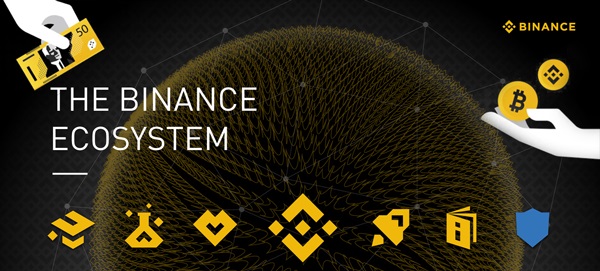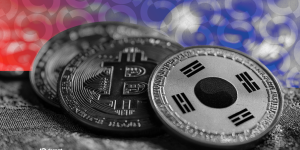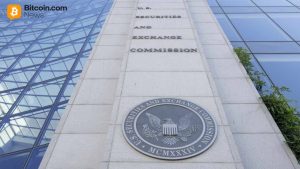Three Predictions for Crypto Regulations in 2022

Manuel Silva Martínez is the General Partner at Mouro Capital, a UK-based venture capital firm._____
2021 may not have been the year that your grandparents started trading cryptocurrencies, but it was certainly a watershed year for the technology. Indeed, the volume of crypto transactions grew 567% year on year to reach a value of USD 15.8tn in 2021, demonstrating that the trading of digital assets is becoming increasingly mainstream. Even if the market is seeing some correction in early 2022, 2021 was such a leap year that no one can deny cryptoassets are here to stay.
While the total volume of illicit activity in cryptoassets has grown in absolute terms; illicit activity today still accounts for less than 1% of all transactions, according to cryptoasset compliance provider Elliptic. However, in the emerging decentralized finance (DeFi) space, which has seen the greatest impact by far, losses due to theft and fraud are accelerating to over USD 10.5bn in 2021, up from USD 1.5bn in 2020. These rising figures were a driving factor in the many examples of regulatory activity that occurred across the globe last year – with significant developments taking place in Dubai, the US, the EU, and South Korea to name just a few.
These developments are so important because they bring trust to cryptoassets, which will be crucial to their ongoing success.
This year, progress will be even more meaningful. I believe that 2022 will be a watershed moment for cryptoasset regulation, with three key developments coming before the end of the year.
Prediction 1: Consumer protection authorities, rather than financial regulators, will take a stand
As the cryptoasset industry matures and becomes increasingly integrated with the traditional financial system, regulators are looking beyond anti-money laundering (AML) and countering the financing of terrorism (CFT) measures to focus on consumer protection. This is due to the highly accessible nature of cryptoassets – although democratizing access to financial markets, it is also exposing unaccredited, and sometimes unsophisticated, retail customers to huge risk.
As the market capitalization of cryptoassets has grown tenfold from early 2020 to USD 2.2tn in January 2022, protecting consumers from market volatility and ensuring market integrity has become a priority.
This will lead to regulatory authorities such as the US Consumer Financial Protection Bureau (CFPB) taking on an increasingly important role in oversight of the cryptoasset industry as they seek to implement standards, primarily around transparency, to protect consumers from fraud and manipulation. Regulation enacted in 2022 by consumer protection bodies will likely cover transparency regarding cryptoasset services offered to consumers, including liquidity requirements, to ensure consumers can access sound and efficient financial markets and non-code-based disclosures for DeFi operations.
This could include requirements for DeFi platform developers to provide clear public statements (in addition to any open-source code they develop) clearly articulating the manner in which their platform operates, as well as any risks that consumers might face as a result of its technical design. It could also include requirements that the code underpinning DeFi apps be subject to a regular third party, or even regulatory audits.
Prediction 2: Financial regulators will zero in on DeFi
The growth in the DeFi space has been incredible, with Elliptic finding that the total capital locked in DeFi services grew by more than 1,700% in 2021 to reach USD 247 bn.
While this presents opportunities for underserved individuals and organizations to access financial services, there is a downside: DeFi is also being exploited by malicious actors to steal, defraud, and launder funds.
Most financial regulators globally have not yet clarified whether their existing frameworks apply to DeFi protocols. Despite this, policymakers are attempting to apply the same regulatory principles used in traditional finance to this new ecosystem to protect investors, and it won’t be long before local regulators bring DeFi under the scope of existing AML / CFT regulations.
We are already seeing the groundwork laid for local approaches in some jurisdictions. In August 2021, the US Securities and Exchange Commission (SEC) imposed a cease-and-desist order on the operators of DeFi Money Market, which offered over USD 30m of securities in unregistered offerings using a DeFi protocol, due to concerns around money laundering and misleading its customers.
As regulators scrutinize the DeFi space more closely, developers and market participants will need to prepare to comply with new requirements.
Prediction 3: VASP due diligence to become standard practice
In October 2021, the Financial Action Task Force (FATF) published guidance introducing the concept of counterparty Virtual Asset Service Provider (VASP) due diligence to the crypto industry. These due diligence requirements mirror those of correspondent banking.
In practice, this means that a cryptoasset business is expected to perform appropriate due diligence on every other VASP it is exposed to through customer transactions, such as its fiat currency on and off-ramps. This includes researching negative media coverage, identifying any regulatory actions taken against the business, and securing evidence that it has sufficient AML, KYC, and data protection controls in place.
This represents a huge commercial opportunity for traditional financial institutions. With VASP due diligence common practice across the cryptoasset industry, banks will gain confidence and trust in its compliance processes, attracting many to serve the sector for the first time.
To leverage this enormous opportunity, banks need to start thinking hard and fast about the changes they will need to make to onboard crypto businesses efficiently and effectively.
The big picture
While crypto has benefited from the lack of clarity and being in a grey area, 2022 could be the year where regulation gets more black or white. Reducing information asymmetries will deliver trust and credibility to the ecosystem.
This presents huge opportunities, not just to VASPs themselves, but also to traditional financial institutions, many of whom have limited their cryptoasset exposure until now due to market volatility and potential reputational risks.
However, financial institutions will need to prepare to move quickly when it comes to compliance. Slow movers risk missing out on significant new revenue streams that their more agile competitors have already established themselves in. ____Learn more: – 2022 Crypto Regulation Trends: Focus on DeFi, Stablecoins, NFTs, and More- Germany-Led Group Wants a New EU Watchdog to Regulate Crypto Firms
– Canadian Regulator Reports Coinbase, Kraken CEOs’ Crypto Custody Tweets- Russia Inches Closer to Crypto Regulation as Ministry Hands Gov’t its Draft Bill
– Global Watchdog Points at Growing Force of Crypto with Another Usual Warning- Regulatory Clarity Would Bring More Crypto Trading to US – FTX’s Boss















